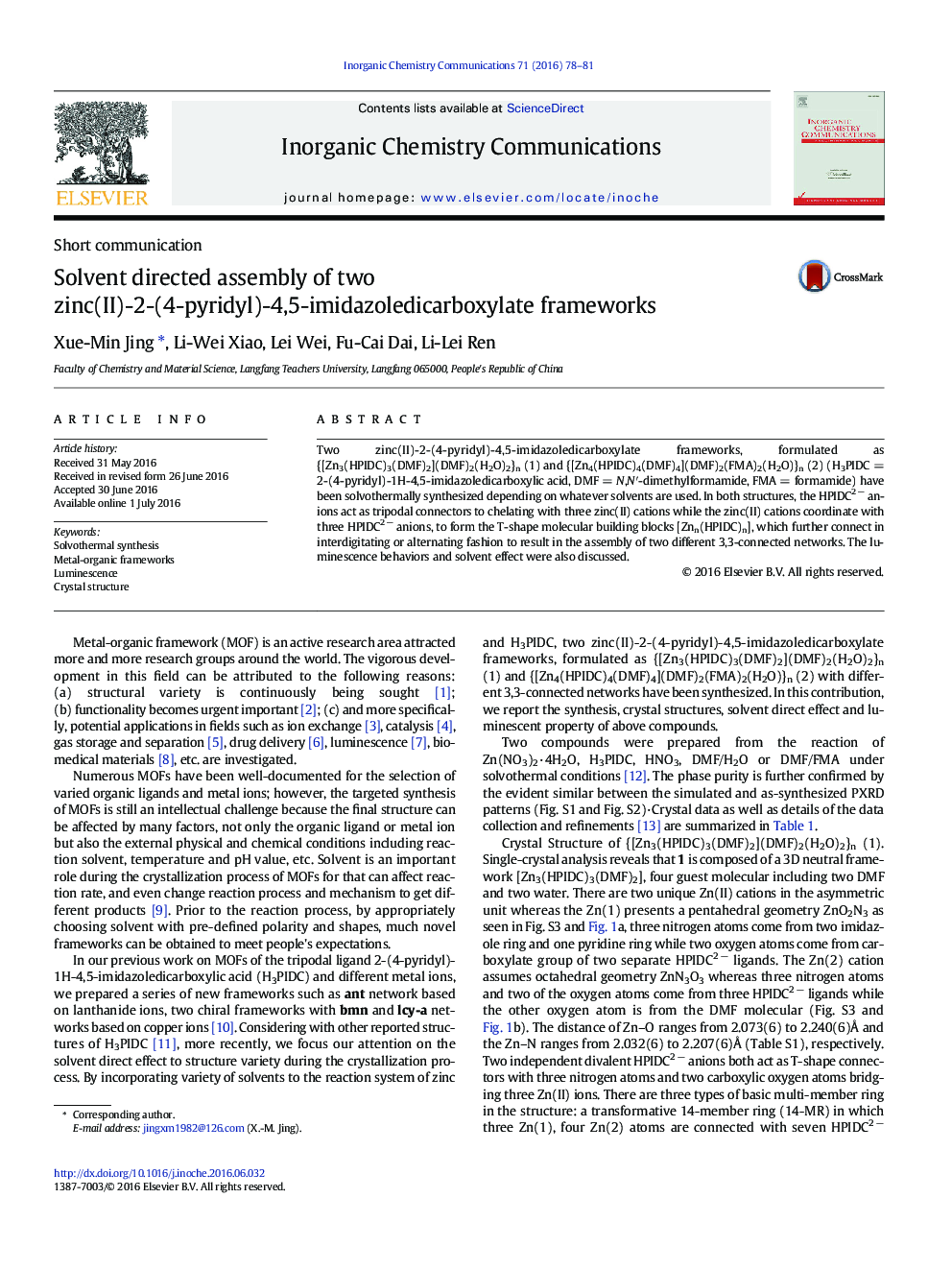| Article ID | Journal | Published Year | Pages | File Type |
|---|---|---|---|---|
| 1301728 | Inorganic Chemistry Communications | 2016 | 4 Pages |
•Two zinc(II)-2-(4-pyridyl)-4,5-imidazoledicarboxylate framework have been sovolthermally assembled from tripodal ligand H3PIDC and Zn(II) cations•Solvents play a key role for the 3D frameworks and the effect has been investigated•Blue luminescent emission properties have been investigated
Two zinc(II)-2-(4-pyridyl)-4,5-imidazoledicarboxylate frameworks, formulated as {[Zn3(HPIDC)3(DMF)2](DMF)2(H2O)2}n (1) and {[Zn4(HPIDC)4(DMF)4](DMF)2(FMA)2(H2O)}n (2) (H3PIDC = 2-(4-pyridyl)-1H-4,5-imidazoledicarboxylic acid, DMF = N,N′-dimethylformamide, FMA = formamide) have been solvothermally synthesized depending on whatever solvents are used. In both structures, the HPIDC2 − anions act as tripodal connectors to chelating with three zinc(II) cations while the zinc(II) cations coordinate with three HPIDC2 − anions, to form the T-shape molecular building blocks [Znn(HPIDC)n], which further connect in interdigitating or alternating fashion to result in the assembly of two different 3,3-connected networks. The luminescence behaviors and solvent effect were also discussed.
Graphical abstractTwo zinc(II)-2-(4-pyridyl)-4,5-imidazoledicarboxylate frameworks with different 3,3-connected networks and blue luminescent emission have been solvothermally assembled largely depending on what solvents are used.Figure optionsDownload full-size imageDownload as PowerPoint slide
